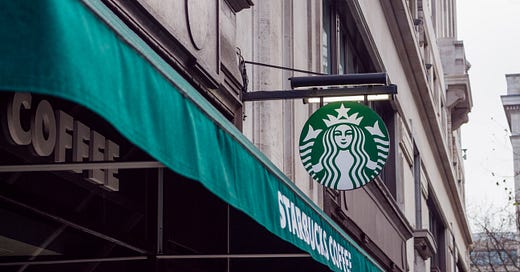Starbucks is known worldwide as a coffeehouse chain. It is the largest one in the world. The company is worth more than $100 billion dollars, by selling coffee every day. But what most of us are unaware of, is a new way they devised some years back to make more money, something rather different than selling food and drinks.
They realized that one of the best ways to make money is to be in the business of money. They’ve devised a very clever way to use customer funds to make some extra. It seems that customers don’t really know how their money is being used, but if that is done in certain methods it is legal.
Starbucks has a loyalty program named Starbucks Rewards System. On the face of it, it is like every other loyalty program on Earth. The company has a mobile app in which you can store your money through digital credits. You can deposit money using your cards easily and the company receives that money then and there.
Customers get “Stars” when they reach milestones set by the company, which also accumulate with every purchase. Eventually, these Stars can be exchanged for food, drinks and even merchandise.
Seems simple enough. But behind the scenes, Starbucks invests all of this money in short-term low-risk opportunities. So they effectively get interest-free loans from their customers. Since the opportunities/assets are “risk-free”, the interest rates earned would be low, generally less than 0.1%.
But the massive scale at which the company operates means even that interest rate gets them millions of dollars from this route. There are around 29 million Starbucks reward members around the world, and some estimates say that upwards of 10 billion dollars of sales come directly through the Loyalty program every year.
This scale means that if Starbucks was actually a bank, it would be bigger than most US banks in terms of deposits. Also, a good chunk of customers forget to use the money they deposited through the app. A 2018 report estimated said that the company would have earned $155 million from these forgotten funds.
This scheme is beneficial to customers too, getting them free stuff effectively. But one could argue that the company definitely benefits more from it, because, one, obviously the interest they earn on the customers’ money is an addition to overall revenue, but two, pre-loaded money means increased spending on the customers’ part, which therefore increases the companys’ operational revenue (the revenue they generate from their core business).
Other companies with large customer bases have also followed suit, in their own ways of course. Apple recently joined the finance business with Apple Pay. They even partnered with the world's second-biggest investment bank by revenue, Goldman Sachs, to launch a credit card for customers. Walmart launched the “Walmart Money Card”, a rechargeable pre-loaded debit card, along with a peer-to-peer money transfer service name Walmart to Walmart, which makes money by charging fees whenever you send money.
While regulations may have been loose previously, governments around the world are now starting to look at the possibility of introducing legislature to control this so that companies who do not have appropriate banking licenses do not actually start acting more and more like banks. What do you think? Is this form of additional business okay or does it seem more like exploiting customer trust?
That’s it for this article, but you read more from me here. And do let me know if you want a specific topic covered! Subscribe for free to receive more posts like this every day!




Interesting, can you also write an article on the Apple Goldman partnership and why it ended ?